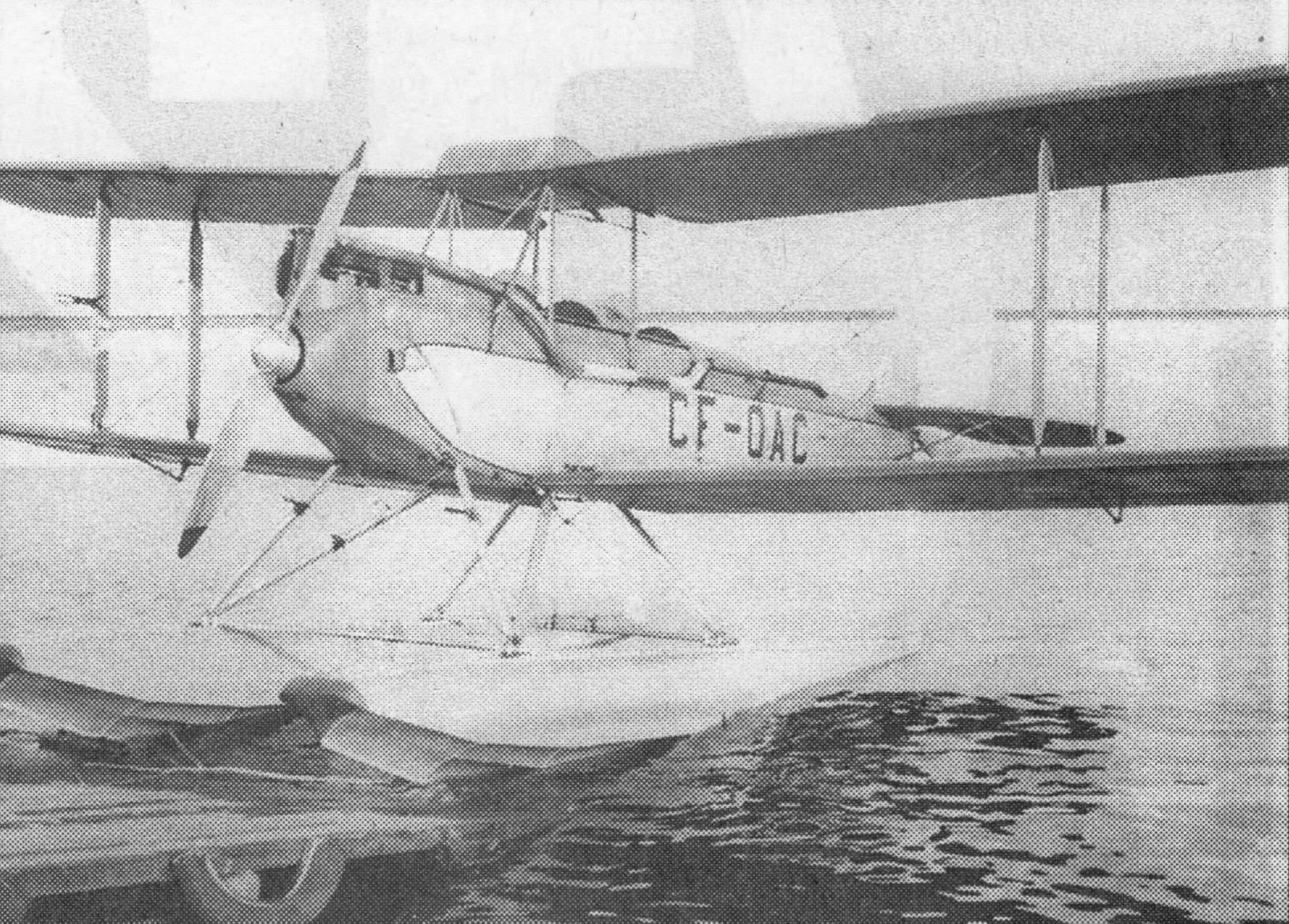
Photo courtesy of the Thunder Bay Museum.
Though very short lived, the Geraldton Flying Club was enormously popular in 1938.
BY KEN R. JOHNSON
The planned formation of the Geraldton Flying Club was announced in the Feb. 10, 1938 edition of the local Times newspaper announced that Mr. Morley Gain, president of the St. Catharines Flying Club, had arrived in town to establish a local flying club and training school.
It also made mention of the yellow and black Gypsy Moth aircraft (CF-CAW) that residents had seen flying over the community. It was the first of the ships that were to be based in Geraldton. The school, featuring a light aircraft type cabin plane, was to commence operations with a series of ground classes and lectures at an early date.
Though Geraldton did not have a land-based airport at the time, CF-CAW used a nearby air base on Lake Kenogamisis in the vicinity of the Little Long Lac Gold Mines.
The Flying Club was declared operational as of the 24th of February and a club school room and headquarters were to be open within a few days at the old Dominion Bank Building on Geraldton's Main Street. The call went out for anyone interested in flying. Mr. Gain was expected to return to the town with a Hamilton Cub machine that was to be used for training purposes. By early March the club was offering "flight instructions, ground training, recreation clubroom facilities [and] free lectures." Actual flying instruction had started by the 28th of that month at the air base.
Some of the personalities involved with the Club included Gus T. Schuyt (The Flying Dutchman) who owned the Moth, and owned / managed and promoted the school. He began his flying career at the St. Catharines Flying Club in the fall of 1936, and obtained his private pilot's licenses in late 1937.
Gordon Welstead, the first instructor, started flying in the fall of 1935 at St. Catharines. He owned and operated his own Curtiss-Reid Rambler aircraft. He was later joined by Frank Hawthorne, a well-known Lakehead instructor, who brought his own aircraft with him, thus doubling the club's fleet.
Wright Beaumont, from Toronto, held a private pilot's license, an air engineer's ticket and a Department of Transport license for aircraft welding.
He apparently spent two years at the Toronto Flying Club and several months with deHavilland Aircraft.
The first local members of the Club were Sid Harris and Curly Whitelaw. By April 7, Chief Constable H. Blair was the first to make a solo flight. The first female member was Mrs. A. Pudden, who "took her first instruction flight" on April 13. Her husband, Albert, proprietor of the Geraldton Feed & Supply Co., apparently "mixed business with pleasure, by taking his business trips in the (club's) plane."
On April 15, Gus Schuyt flew to Fort William to secure a set of floats for his ski-equipped aircraft. By late May, the floats were being installed on the plane, and a new dock was under construction.
The good news concerning the club was not to last for long however. In early-to-mid-July, officials at the Little Long Lac Gold Mines expressed concern as to what might happen if the club's plane crashed into the mill. In their opinion, such an accident could easily lead to a delay in production and "a long period of unemployment for many."
At the same time, Inspector Jack Shields, of the Department of Aviation declared the site unsuitable for flying school purposes and, by early August, confirmed that "the Geraldton Flying Club had been deprived of its landing privileges at the dock site east of Little Long Lac Bridge, by an order from the Inspector of Civil Aviation." The club could no longer operate.
Indicative of the local popularity of the club was the list of 47 members reported in the Christmas 1938 issue of the Daily News.
Looking Back is written weekly by one of various writers for the Thunder Bay Museum. For further information visit the museum at 425 Donald St. E., or view its website at www.thunderbaymuseum.com. This article was published in the Thunder Bay Chronicle-Journal, Jan. 22, 2012. It is re-printed courtesy of the Thunder Bay Museum.
Many thanks to Ken Johnson, who sent me the scan of this article in the Thunder Bay Chronicle-Journal.
Can you provide corrections or comments?
Please email Charlie Dobie.